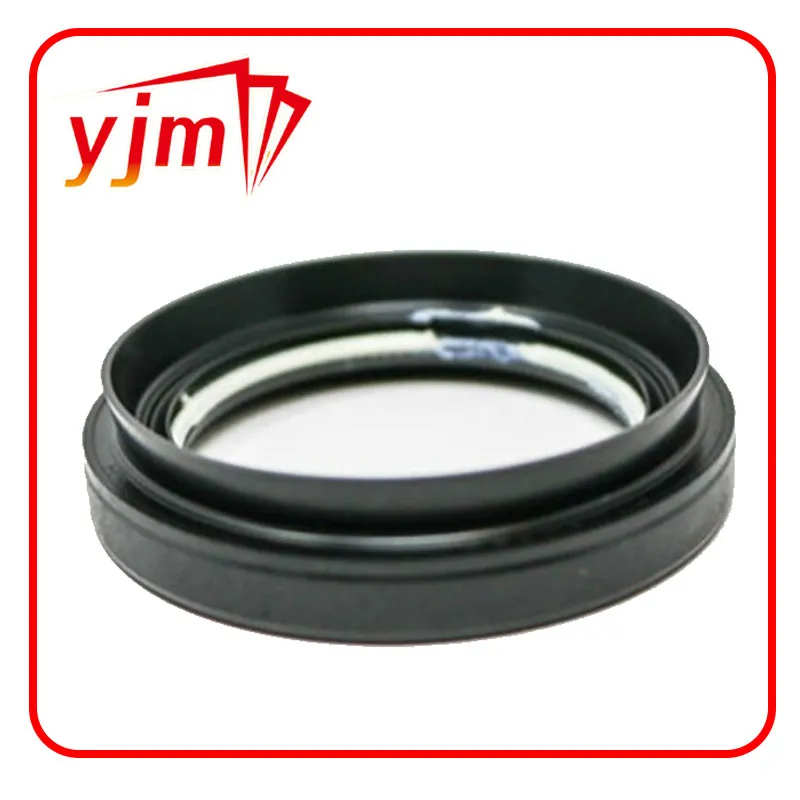steering rack oil seal
Understanding Steering Rack Oil Seals Importance, Function, and Maintenance
Steering systems are vital components of any vehicle, playing a crucial role in ensuring safety and control. Among the various parts of a steering system, the steering rack oil seal is often overlooked but essential for the proper functioning of the steering mechanism. This article delves into the importance, function, and maintenance of steering rack oil seals, highlighting their role in the overall performance of a vehicle.
What is a Steering Rack Oil Seal?
A steering rack oil seal is a mechanical component designed to prevent the leakage of fluid from the steering rack while also keeping dirt and contaminants out. Typically made from durable materials such as rubber or polyurethane, these seals are engineered to withstand high pressures and temperatures associated with steering systems.
The Importance of Steering Rack Oil Seals
The steering rack oil seal serves multiple purposes, all of which are critical for the smooth operation of the steering system
1. Preventing Fluid Leakage Hydraulic power steering systems rely on pressurized fluid to assist with steering. An effective oil seal prevents the hydraulic fluid from leaking out of the steering rack, which is essential for maintaining proper steering responsiveness.
2. Protecting Against Contaminants Dirt, dust, and grime can easily compromise the integrity of the steering system. Oil seals help keep these contaminants outside the system, preventing wear and tear on internal components like gears and bearings.
3. Enhancing Component Longevity By preventing leaks and blocking contaminants, steering rack oil seals contribute to the overall longevity of the steering components. This means a reduced likelihood of needing repairs or replacements, ultimately saving time and costs.
4. Maintaining Steering Performance A well-functioning oil seal ensures consistent steering performance. Any fluid loss can lead to a decrease in hydraulic pressure, resulting in poor steering response and increased difficulty in maneuvering the vehicle.
Signs of a Failing Steering Rack Oil Seal
Recognizing the signs of a failing oil seal is crucial for maintaining vehicle safety and performance
. Here are some common indicatorssteering rack oil seal

1. Fluid Leaks The most obvious sign of a failing oil seal is the presence of fluid leaks. If you notice puddles of red or brown fluid under your vehicle, it may indicate a problem with the steering rack oil seal.
2. Steering Difficulty Increased effort required to turn the steering wheel is another warning sign. A drop in hydraulic pressure due to fluid loss can cause this, making steering more challenging and less responsive.
3. Unusual Noises A whining or groaning noise when turning the wheel could indicate that the power steering fluid level is low. If the oil seal is compromised, air may enter the system, leading to these noises.
4. Contaminated Fluid If the power steering fluid appears dirty or contains debris, there may be a problem with the oil seal allowing contaminants to enter the system.
Maintenance and Replacement
Regular maintenance is crucial for ensuring the longevity of the steering rack oil seal. Here are some tips
1. Fluid Checks Regularly inspect the power steering fluid level and quality. If the fluid is low or contaminated, it may be time to check the oil seal.
2. Visual Inspections During routine vehicle inspections, check the steering rack and surrounding areas for signs of fluid leakage or degradation of the oil seal.
3. Prompt Repairs If you notice any symptoms of a failing oil seal, address them promptly. Ignoring small leaks or its symptoms can lead to more significant issues down the line.
4. Professional Service Engage a professional mechanic for any oil seal replacements or significant repairs. Proper installation is critical to ensuring that the new seal functions effectively.
Conclusion
The steering rack oil seal may be a small component of the steering system, but its role is undeniably significant. By preventing fluid leaks and keeping contaminants at bay, it ensures the smooth operation of the steering mechanism, contributing to a safer driving experience. Regular maintenance, timely inspections, and vigilant care can extend the lifespan of this critical component, ultimately ensuring that you have reliable steering performance for years to come.
-
Simplifying Oil Changes: A Comprehensive Guide to Oil Drain Plugs and Their Variants
News Aug.04,2025
-
Mastering Oil Drain Maintenance: Solutions for Stripped, Worn, and Upgraded Oil Plugs
News Aug.04,2025
-
Fixing Oil Pan Plug Issues: Leaks, Stripped Nuts, and the Right Replacement Solutions
News Aug.04,2025
-
Everything You Need to Know About Oil Drain Plugs: Sizes, Fixes, and Upgrades
News Aug.04,2025
-
Choosing the Right Oil Drain Plug: A Guide to Sizes, Materials, and Drain Innovations
News Aug.04,2025
-
A Complete Guide to Automotive Drain Plugs: Types, Problems, and Innovative Solutions
News Aug.04,2025
-
The Ultimate Guide to Car Repair Kits: Tools and Essentials Every Driver Should Own
News Aug.01,2025
Products categories















